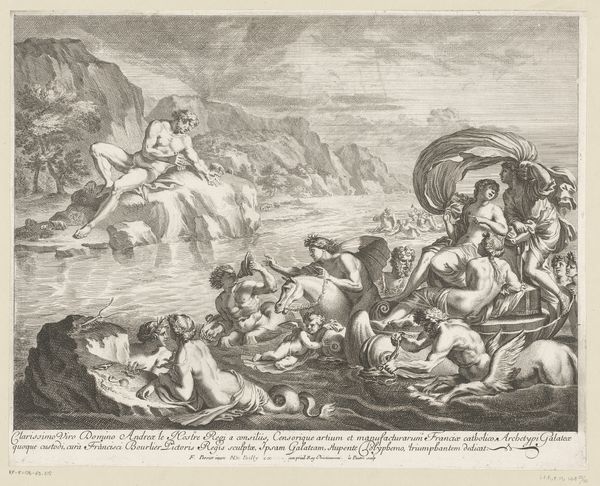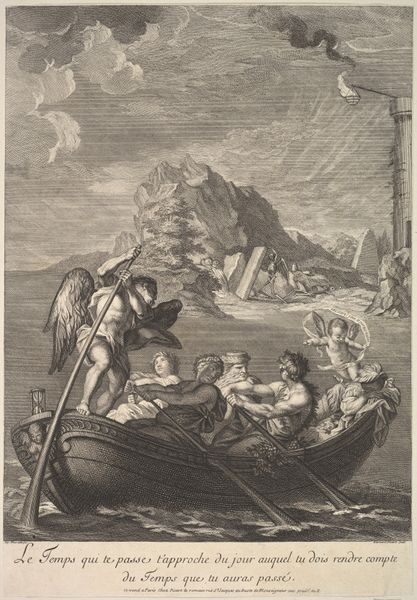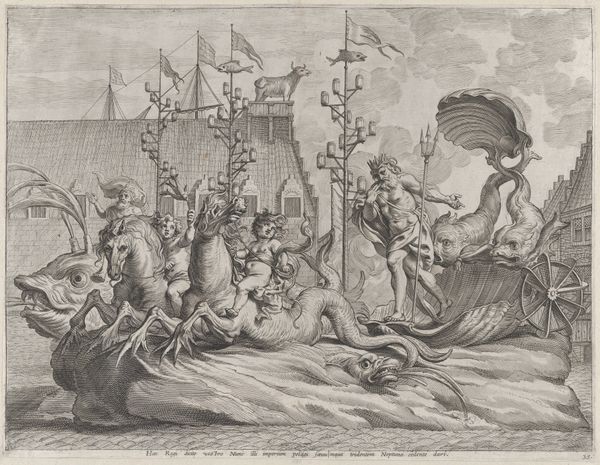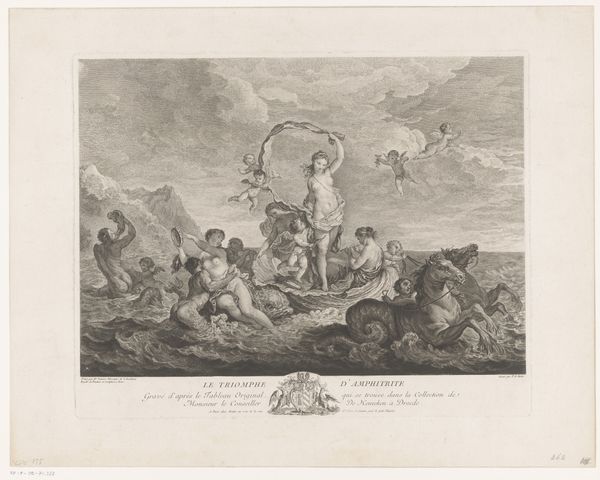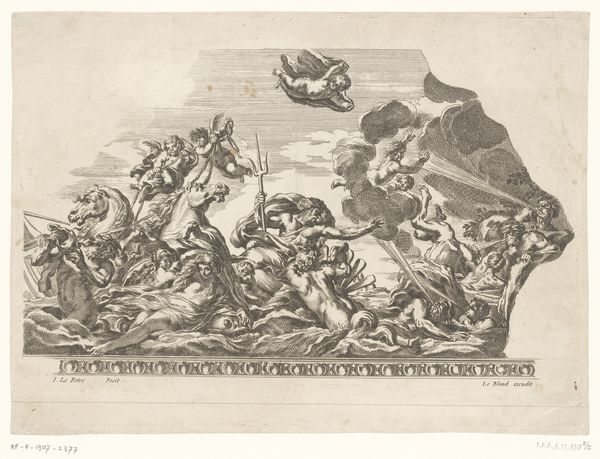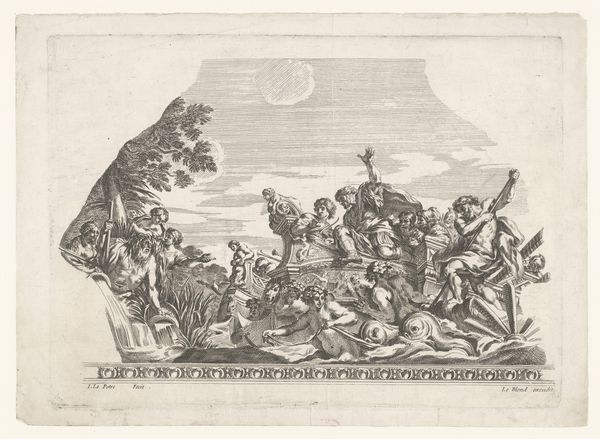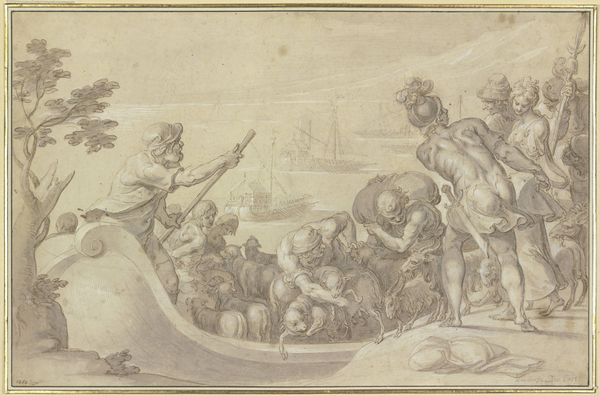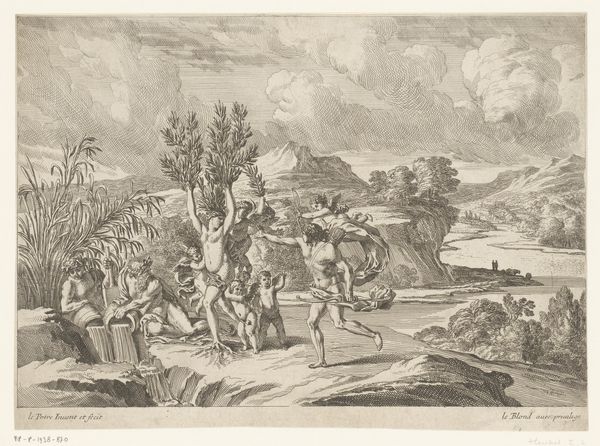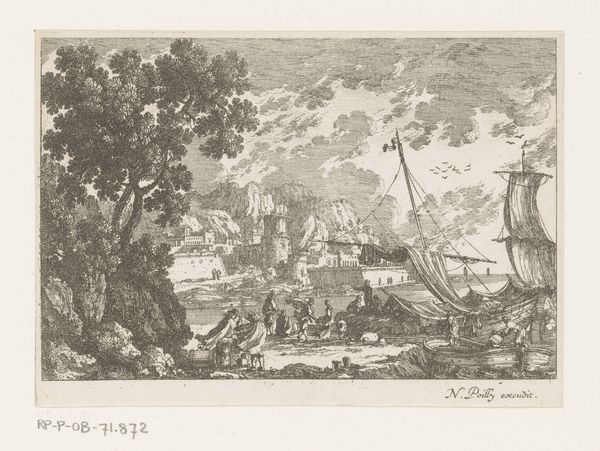
engraving
#
neoclacissism
#
allegory
#
landscape
#
figuration
#
history-painting
#
academic-art
#
engraving
Dimensions: height 272 mm, width 309 mm
Copyright: Rijks Museum: Open Domain
Curator: This engraving, "Allegorische voorstelling op de voorspoed," by Jacob Ernst Marcus, dates back to 1805 and presents an allegorical scene of prosperity. It is part of the Rijksmuseum collection. Editor: My first impression is pure exuberance! The teeming figures, the rolling sea – there's almost too much to take in. You really get the sense of chaotic abundance. How was an image like this even produced at this scale? Curator: As an engraving, the lines dictate much of its impact. Marcus skillfully uses line weight to create depth and contrast, almost like a blueprint of shared aspiration. It uses symbolism heavily to communicate deeper meaning and cultural hopes. The figures allude to abundance and safe journeys. Editor: Engraving lends itself to mass production, so that's worth thinking about: The materiality is very neat and fine-grained, but at its heart, it is a popular product available and made for wide circulation during a historical context. What do you mean "cultural hopes"? Curator: The putti, nereids, the bountiful cornucopia—these aren't just pretty images. The abundance represented, framed within this seascape, points to maritime trade and its success, perhaps tied to post-revolutionary optimism of renewal through enterprise. This would also evoke stability amidst chaos and change of governance in the Netherlands at that moment. Editor: It is amazing the detail he manages with the limited resources that this reproductive medium provides to create tonal variations and intricate figures and forms! In this way it could be disseminated easily and consumed readily. What does the ship represent to you? Curator: Ah, the ship... for me, it symbolizes not just transport of goods, but also the vehicle of destiny, carefully navigated through both calm and stormy waters. All these figures both guiding and buoying the vessel itself… the figures that look a mix between mermen and personified “Indians”? Their symbolic cargo offers sustenance. Editor: The fact it’s rendered as a print does give pause for thought, though. A luxury object in itself, definitely intended to carry certain economic and social connotations through reproduction. These all come together with materiality itself as social commentary of consumption practices of the day. Curator: So, for me, "Allegorische voorstelling op de voorspoed" acts as a time capsule—holding cultural memory encoded in its symbols that continue to offer a glimpse of history and ideology, whereas... Editor: Whereas I see a carefully fabricated commodity mediating a social relationship that speaks as clearly of labor and trade in 1805 as any text could.
Comments
No comments
Be the first to comment and join the conversation on the ultimate creative platform.
